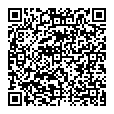The online service has been developed jointly by the European Environment Agency (EEA), an EU body and a leading environmental network and information partner, the geographic information system developer Esri and Microsoft. The partners are showcasing the new service during the Eye on Earth Summit in Abu Dhabi from 12-15 December. Organisations across the globe are now invited to join the network and start adding data to the range of datasets already available.
The web service takes the form of online maps, which can be manipulated by users. Without the need for any technical training, people can choose to add a huge variety of layers to the map – for example showing pollution, social development, economic factors, land use, transport and so on – to create new insights. The creators of Eye on Earth hope to add other data visualisation functions in the future, alongside the mapping tools. Maps and other data can also be saved and shared through social media.
“Environmental problems are increasingly complex and interconnected,” EEA Executive Director Jacqueline McGlade said. “The good news is that there is now a huge volume of environmental data and information available, and it is growing continuously. The new Eye on Earth web service brings this data together in one place, enabling anyone in the world with an internet connection to combine and analyse information on their environment.”
Official information providers such as national environmental institutions can upload information from their vast networks of monitoring stations. The EEA has already uploaded large amounts of data onto Eye on Earth for free and accessible use. This includes data on water, air, climate change, biodiversity and land use.
Other organisations which have also uploaded data include the United Nations Environment Programme (UNEP), the Joint Research Centre of the European Commission (JRC), the U.S. Geological Survey and the Abu Dhabi government. Data from new European observation satellites may also be added in the future.
The web service is aimed at everyone, from scientists to academics, NGOs to individuals. Moreover, Eye on Earth does not just display data – it is also a platform where individuals and organisations can upload their measurements and observations, filling crucial gaps. It aims to ‘crowd source’ information from individuals across the world, and bring in data from many different groups, including ‘citizen science’, indigenous knowledge and lay expertise.
Rob Bernard, chief environmental strategist at Microsoft, said: “Transforming information into insight is essential if we are to address society’s massive environmental challenges. By leveraging not only new technologies enabled by cloud computing, but also doing so in a way in which user interaction is both simple and powerful, the EEA, Microsoft and Esri are hoping to revolutionize the way in which people can understand critical information about our planet. We are excited and honoured to be able to provide technologies that help citizens become more aware of the environmental impacts happening where they live.”
Jack Dangermond, President of Esri, said: “As soon as you open the portal you enter an interactive geospatial environment that has map tabs and search tools. You can start playing with maps and data right away, opening a base map, adding map layers, and publishing. You may even join a map group. Suddenly you realise that this network is going to change the way we study environmental problems and talk about solutions.”
The Eye on Earth global public information service created by the EEA and partners is distinct from the Abu Dhabi summit of the same name, although the summit name is inspired by the EEA project and the substance of discussion is closely related. The summit will address environmental and societal information and networking, and its importance for decision-making.
The EEA is actively involved in summit preparations and discussions. It is hoped that the summit will provide an impetus for information sharing in the lead up to Rio+20, a sustainable development summit to be held next June on the 20th anniversary of the first historic Earth Summit in Rio de Janeiro.
Follow new Eye on Earth developments on Facebook, Twitter, YouTube and the Eye on Earth Forum.









Document Actions
Share with others